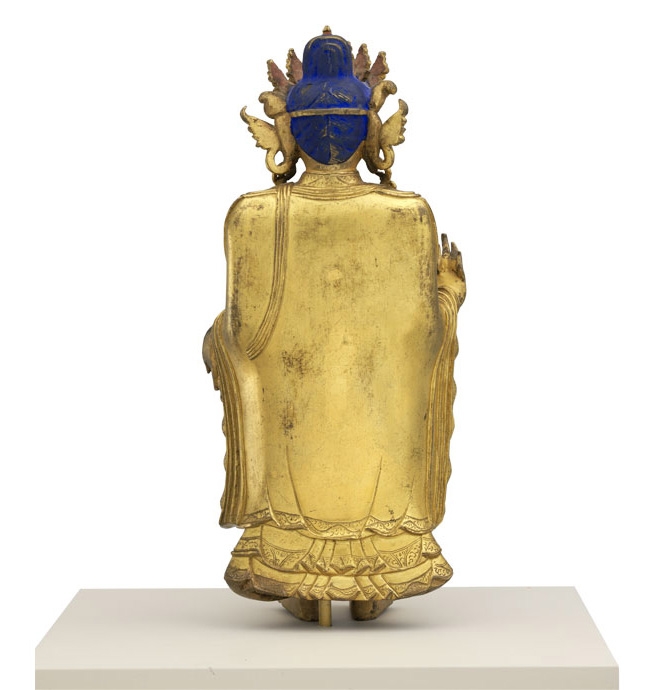
This sculpture of Buddha Shakyamuni represents him in a form that is believed to be modeled on the first image of the Buddha. That image was created at the bequest of the Indian king Udhyana and refers to the event from the Buddha’s life when the Buddha descended from the realm of the Thirty three gods where he taught his mother to continue his teachings in the human realm. This type of standing Buddha image was very popular in Central Asia and China and subsequently in Tibet as well. The robes, a Chinese interpretation of an older Central-Asian convention, are shown clinging to the body, but instead of falling in natural folds, the pleats form a fanciful and complex pattern. This visual convention is commonly found in Chinese Buddhist sculpture of this type and in examples produced in the later part of the Qing period (1644–1912).
H 9 x W 4 1/8 x D 3 in.
C2005.9.1 , HAR 65406
- https://dev.rubinmuseum.org/images/content/3588/web_c2005.9.1-front-(a)__zoom.jpg
- https://dev.rubinmuseum.org/images/content/3588/web_c2005.9.1-back__zoom.jpg
- https://dev.rubinmuseum.org/images/content/3588/web_c2005.9.1-front-(a)__zoom.jpg
- https://dev.rubinmuseum.org/images/content/3588/web_c2005.9.1-back__zoom.jpg

__slider.jpg)
